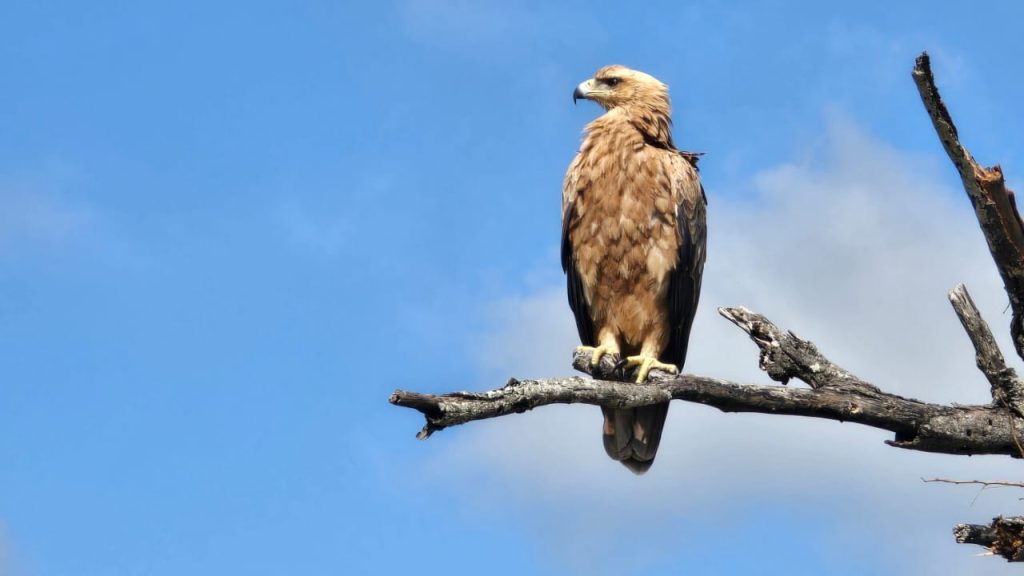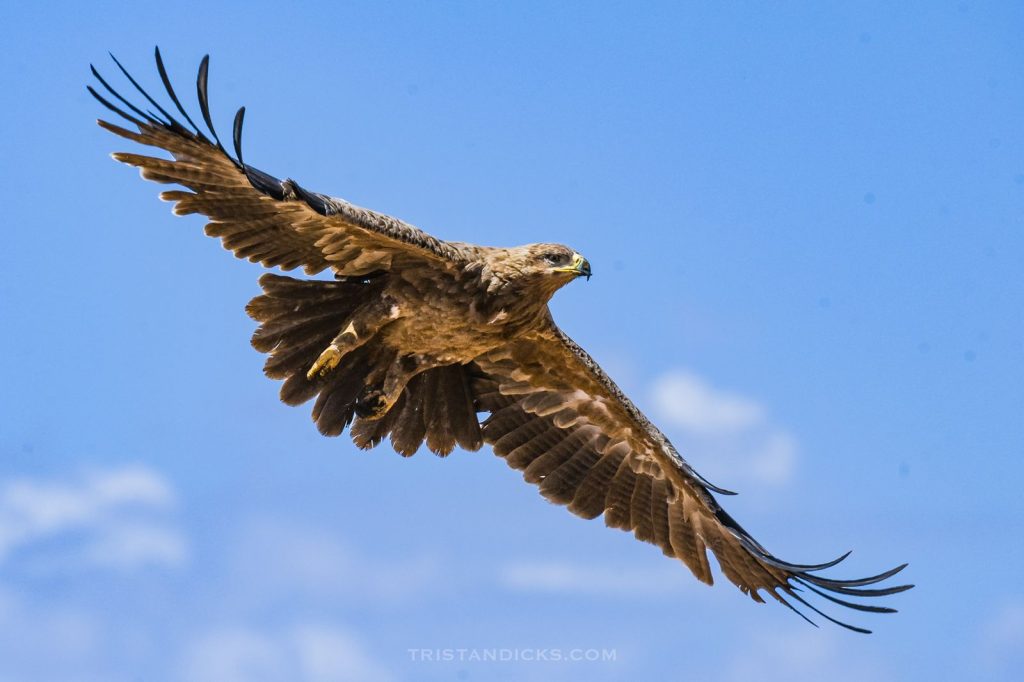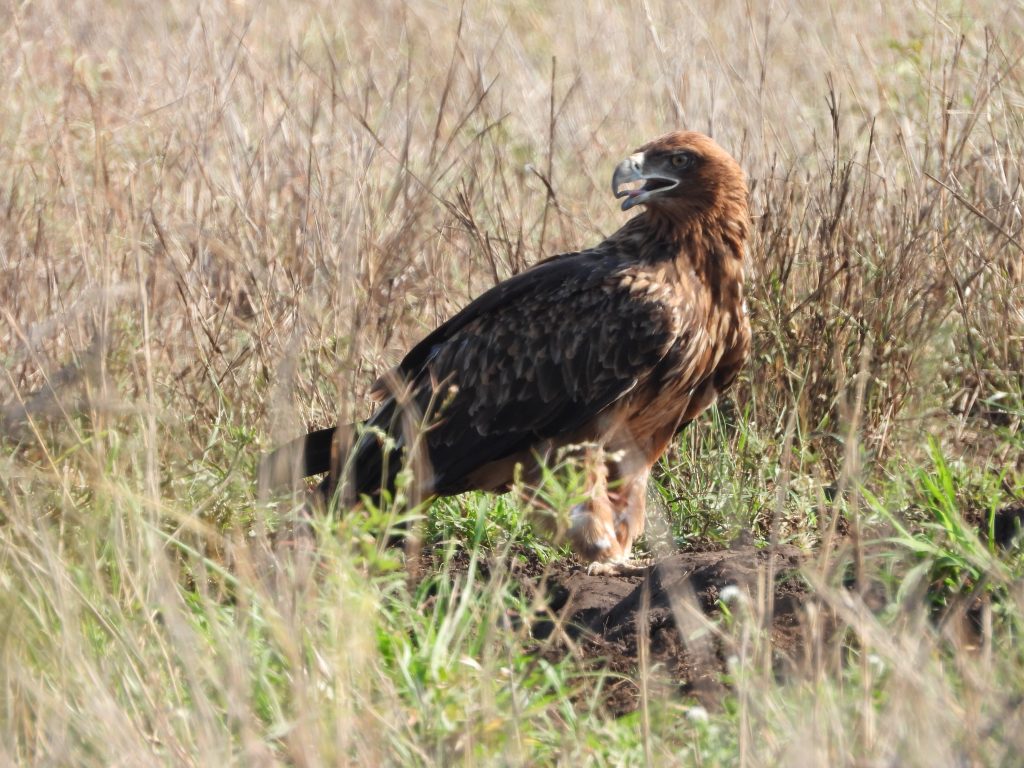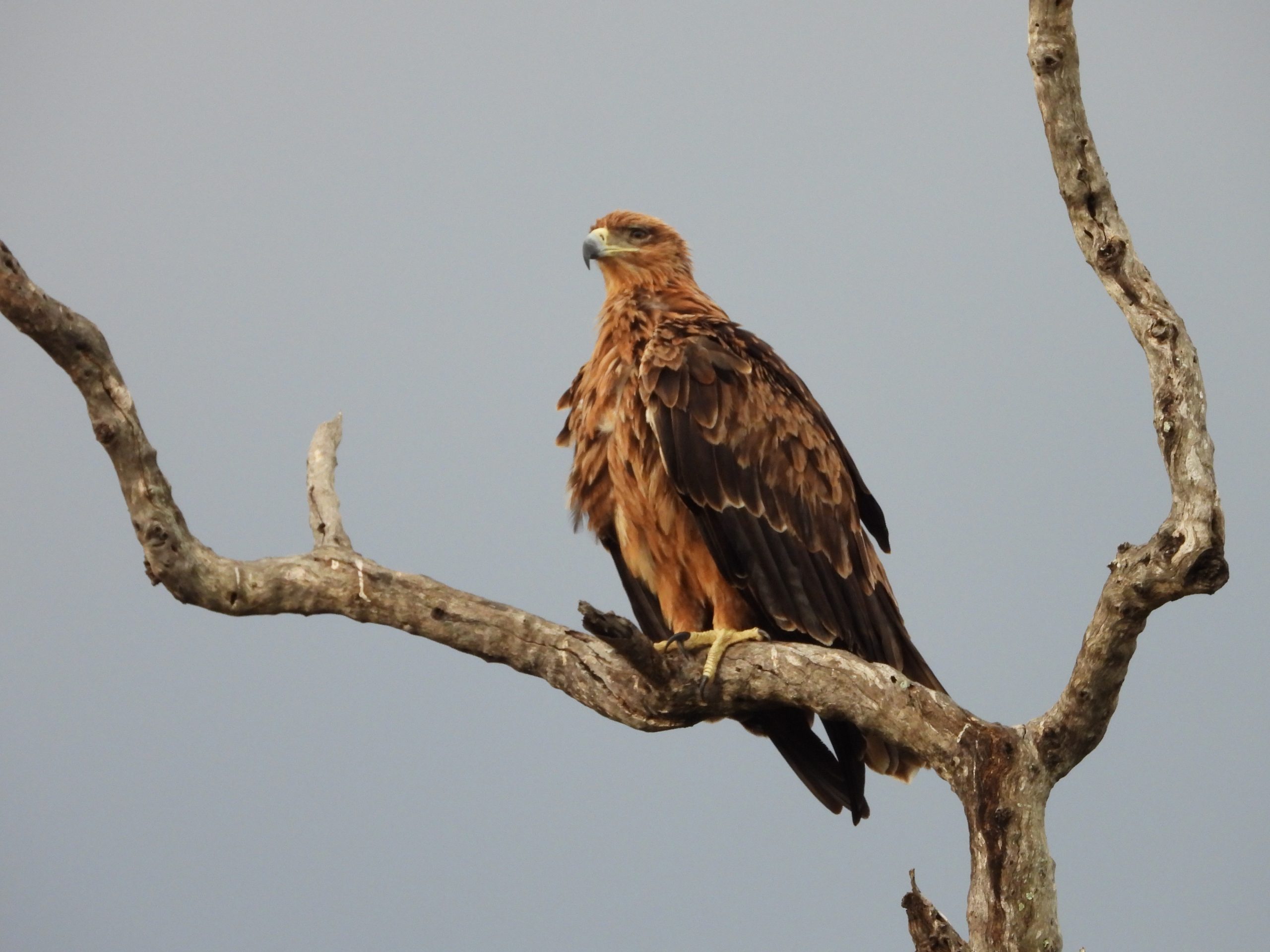Hyenas often get the bad wraps that they are dirty scavengers and only follow other animals around to steal their food. This may sound horrible to some, but it is in fact a clever way of saving energy. Let someone else do all the work, then rush in, over power them and steal the food with minimal effort. It only makes sense that one of the birds of prey do the same, and the Tawny eagle has mastered this as well. Although both species actively scavenge, they are in fact both very good hunters and when need be, can easily bring down their own prey. What puts these kleptoparasites aside, is their ability to see an opportunity and take it where it presents itself. In this blog, we are going to have a look at Tawny eagles, one of Africas most successful birds of prey.
Distribution and appearance
The Tawny eagle is one of Africas most widely distributed of the eagles and the only areas you won’t find them is dense forest or the true deserts. Otherwise they seem to have mastered just about every other habitat. Unfortunately due to man’s movement, they do far better in the protected areas like national parks and large conservation areas.

When first seen by visitors from the Northern Hemisphere, Tawny’s can sometimes be confused as a Golden eagle. These eagles are however somewhat larger than the Tawny’s. Here in Africa, the Tawny can sometimes be confused with a Wahlberg’s, Steppe or Lesser and Greater Spotted eagle. One of the things that contributes to this confusion is the fact that Tawny’s come in different colour morphs and so identification, especially when the migrants are here, can be tricky to the untrained eye.
The variation in adult, or near-adult plumage in Tawny’s can vary from pale yellow to dark chocolate. Some birds will have nearly no markings on them, while others can be heavily streaked. Adult birds have more of a honey-brown coloured eye to them. Their facial expression seems very different to birds that look similar to them and the gape is much shorter and less prominent than these as well. Juvenile Tawny’s can be a lot prettier than these adults and they may be found in a straw-yellow to a pale rufous colour. Their eyes are also a lot darker than these adults adult birds and at distance they can even seem more black, although they are a very dark brown.
Hunting and feeding
Tawny’s are, like hyenas, not at all fussy about what protein they eat and how they get it. They are happy to feed on anything from termites to dead elephant carcasses. In saying this, they are more than happy to scavenge at large carcasses. They will often be the first to arrive at a carcass along with Bateleurs and Hooded vultures. They can compete with these two species, but once larger species of vultures arrive and the numbers start to build up, they get pushed to the outskirts of the feeding frenzy and invariably give up and move off. They are cheeky though and may slip in to grab a small morsel for takeaways!

Along with scavenging, Tawny’s are happy to follow smaller birds of prey like falcons and smaller eagles. Once these birds have made a kill, the larger more aggressive Tawny will rush in and take their food. They are also known to follow Souther Ground Hornbills and steal from them. The hornbills can team up and try and fight back, but the eagles are far more acrobatic in flight and with the talons to use as well, they more often than not get their own way.
In saying all of this though, Tawny eagles are in fact very good hunters in their own right. They don’t quite have the crushing talons of some of the larger eagles, and so some large reptiles like monitor lizards may be a bit much. However, large game birds like spur-fowl and guineafowl are often taken. Also mammals can be taken and things like young monkeys and even impala lambs can be taken. There are records of both wild dog and jackal puppies falling to Tawny’s as well. Hunting can happen from the wing or from a perch and with their great eyesight, these clever birds slip in at any opportunity.
Breeding and nests
As with all of your large eagles, Tawny’s are monogamous and a pair will have a territory that they will hold and defend against others. Nest sites will be used for many years if the birds go undisturbed. These nests are usually built right up at the tops of a crown of a tree, with nothing above them. This gives the adult birds easy access to the nest, especially when carrying food in.

Courtship and actual breeding takes place in the autumn months of the year. This means that the eggs, which take around 39 – 44 days, do not cook in the sun. Two eggs are laid, but as with all large eagles, very seldom will both survive as the older chick invariably kills its younger sibling. The second egg is only laid incase something happens to the first. Both parents will bring food to and feed the chick. The chick will be on the nest for about 10 – 12 weeks before it is ready for its for flight. Once this happens, the young bird is dependent on its parents for another two months. It will be allowed to hang around in the parent’s territory for another season as they only breed every second year. However when the next breeding season comes around, the juvenile will not be tolerated and will be chased.
These incredible birds of prey that are often said to be thief’s or scavengers need to be given more credit than they get. Although they may be a lot prettier than the hyenas they are often compared to, both species are highly intelligent and aggressive as well. This gives them the edge over smaller or less well equipped animals and has allowed them to spread over the large areas they can be found today.





